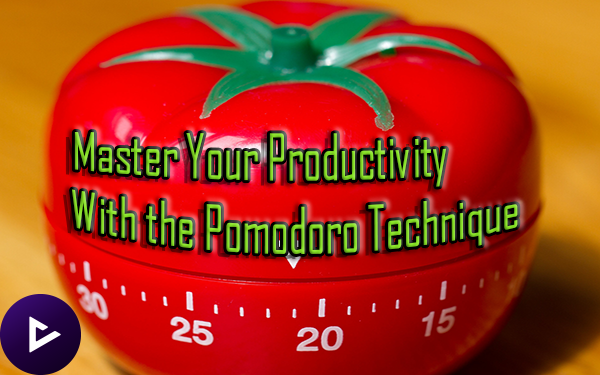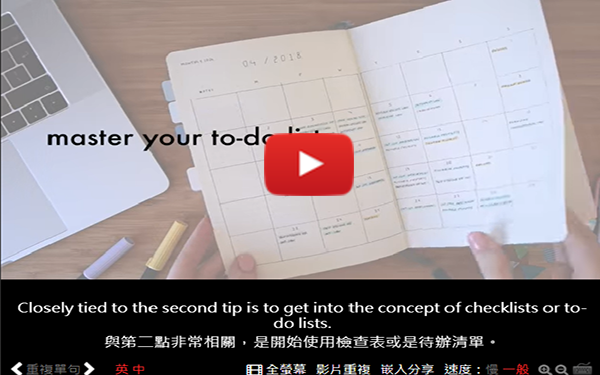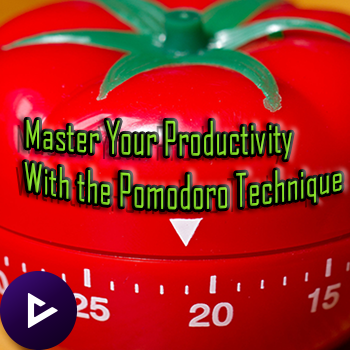Trying to find a better way to remain productive?
A tomato is here to the rescue
Learn how to use the Pomodoro Technique to accomplish your goals

Introduction the Pomodoro Technique
Are you trying to study, be productive, or learn a new skill? Great, then this blog is for you. We will explore the Pomodoro Technique, a time-management(1) system you can use to organize your time, cut out distractions, and finish all your tasks.
Let’s face it, it’s really easy to get distracted and lose focus. With social media, technology, and the normal hustle-bustle of life, it can feel impossible to remain on task. It’s frustrating to spend hours on a project, only to realize you haven’t accomplished much and spent more time scrolling through Facebook, replying to texts, and watching YouTube videos instead of getting your work done.
The Pomodoro Technique works well because it forces you to focus on being productive for short bursts(2) of time, before being rewarded with a small break. We will get into the details on how to actually use the Pomodoro Technique soon.
You Say Pomodoro, I say Tomato
Pomodoro means tomato in Italian. Franceco Crillo created this technique in the 1980s while in university to better manage his study time. The name Pomodoro came from the fact that he used a tomato-shaped timer to record time intervals(3) (you can use whatever timer you like, including a smartphone).
How Does the Pomodoro Technique Work?
Your first task is to plan out your schedule. You need to figure out what you want to get done or accomplish. For example, maybe you need to study for a test and write an essay. In this case, you need to use your Pomodoros (each individual study segment is called a Pomdoro) to finish these two tasks.
Next, grab a timer and set it for 25 minutes. This is your time to focus and get your work done. During these 25 minutes, you must cut out(4) all distractions and try not to look at the timer. This is strictly productivity time.

Once the timer goes off after 25 minutes, you get a 5 minute break. Use this break to get water, go to the bathroom, and try to get away from your study/work area. You can mark(5) an “x” on a piece of paper to keep track of how many Pomodoros you finish. Marking each completed Pomodoro will be especially helpful if you have a lot to get done.
You repeat this cycle until the fourth Pomodoro. After the fourth Pomodoro, take a 20 minute break. You can now repeat the entire cycle if you have more work to do, and if you finished everything, congratulations!
It looks like this:
- Choose a task to work on
- First Pomodoro: 25 minutes
- 5 minute break
- Second Pomodoro: 25 minutes
- 5 minute break
- Third Pomodoro: 25 minutes
- 5 minute break
- Fourth Pomodoro: 25 minutes
- 20 minute break
- Repeat or add Pomodoros if necessary
Can I Change My Pomodoro Time?
The standard(6) Pomodoro is 25 minutes of work with a 5 minute break, but this can be changed. I recommend you experiment with different sets of time. If the standard Pomodoro doesn’t seem to work for you, you could try something different, like 50 minutes of work with a 10 minute break (which more closely resembles the structure of a classroom).
Don’t be afraid to experiment and find what works for you. The basic idea is that you work hard for short bursts of time and take breaks to help your brain recover for another Pomodoro. We have so many distractions in today’s world that shorter bursts of “focused” study time with short breaks can really help us regain focus.

Hardcore Pomodoros
Some people create very strict rules for their Pomdoros. One such example states that if you get distracted, you need to give up on the current Pomodoro and start over again. Likewise(7), some people say that after the 25-minute mark, you must stop working and take your break (you cannot continue working, even if you want to).
I personally find these rules to be a little too rigid, especially since I do not live alone and I mostly work on creative tasks, but if you want more discipline, you could experiment with these rules. Just don’t feel bound(8) to them if they seem counter-productive.
Timing & Distractions
You don’t need to finish any specific number of Pomodoros to succeed. Let’s say I want to get some writing done after work. I may set a goal of finishing five Pomodoros. You can create a more efficient schedule if you outline the work you want to get done before starting. For instance, here is what one of my Pomodoro schedules might look like.
- Pomodoro 1: Finish podcast episode outline
- 5 minute break
- Pomodoro 2: Edit the last chapter of my story
- 5-minute break
- Pomodoro 3: Go over story outline and begin writing my next chapter
- 5-minute break
- Pomodoro 4: Continue to write the current chapter
- 20 minute break
- Pomodoro 5: Try to finish the current chapter
- Finished!
This is just an example. I could keep going if I had the time and energy. If my goal were to finish writing my current chapter, maybe I could cut out the podcast outline at the beginning or add another Pomodoro at the end.
Eliminating distractions is of the utmost importance. Planning your schedule and defining your productivity goals will help out, but at the end of the day, it’s still easy to succumb to the urge to look at your email or respond to a text.
Your 25 minute Pomodoro should be distraction-free. You can always check your social media or message a friend on your breaks. I recommend turning off all notifications or silencing your phone and computer (there are now tons of apps that can do this for you).

What Can I Use the Pomodoro Method For?
You can use the Pomodoro Technique for anything. Here is a list of ideas you might want to try it out with.
- Research
- Studying
- Freelance work
- Online Lectures
- Practicing a hobby
Get creative. Whatever you want to get done but often procrastinate on is a great activity to use the Pomodoro Technique for.
Can I Use the Pomodoro Technique at Work?
Sure, but I personally find this much harder than working on my own tasks. There are just way more distractions at work (no offense intended). Co-workers may need you, notifications go off on the computer, meetings can interrupt the day, etc. However, maybe you will find that Pomodoros work well for your job. Give it a try!
Final Thoughts
Lately, I have been using the Pomodoro Technique with mostly successful results. It comes in handy when you have an especially big task, such as writing a novel. It really allows you to break down and segment(9) your tasks.
That said, distractions happen and it takes a while to get used to the Pomodoro Technique. It could take days or weeks to get used to doing it, and it might not always be the best solution for getting your work done. For instance, I don’t need to use the Pomodoro to finish my art (which I can easily spend a few hours on a day), but since writing a novel is very tedious(10), I tend to procrastinate whenever I can. The Pomodoro Technique gives me the motivation I need to get started. It also allows me to organize how much I can get done in one day.
So, if you are trying the Pomodoro Technique, try to use it for the most important tasks that tend to get pushed back, and be sure to give yourself time to get used to this style of productivity. Lastly, don’t be afraid to experiment. The 25 minutes of work with a 5 minute break rule isn’t static, and you don’t need to use this technique for every task. Try out different sets of time with different activities. At the end of the day, whatever helps you best accomplish your goals is the best choice. 
Vocabulary
1. time management (n.)
Def. the ability to use one’s time effectively or productively, especially at work.
Ex. She has never missed a deadline because her time management skills are impeccable.
2. burst (n.)
Def. a sudden intense effort
Ex. Running in short bursts is more difficult to me than running long distance.
3. interval (n.)
Def. a space of time between events or states
Ex. If you place short breaks between your study intervals, you might do better on the next test.
4. cut out (phr.)
Def. to remove something from something larger
Ex. I was just too busy, so I had to cut out playing guitar from my daily schedule.
5. mark (v.)
Def. to indicate by a mark or symbol
Ex. You can mark the students’ papers with a red pen.
6. standard (adj.)
Def. constituting or conforming to a standard, especially as established by law or custom
Ex. A standard fantasy novel has dragons and magic.
7. likewise (adv.)
Def. in like manner : similarly
Ex. Bees are important to every major ecosystem. Likewise, every species has a role to play in their particular environment.
8. bound (adj.)
Def. unlikely or unable to change, develop, move, etc.
Ex. She felt bound to her bosses’ suggestions, which hurt her confidence.
9. segment (n.)
Def. a separate piece of something
Ex. This segment of the TV show is my favorite.
10. tedious (adj.)
Def. tiresome because of length or dullness
Ex. Trying to write a book is tedious because it takes so long, and there are so many steps.
Photos
Pomodoro Technique (illustration) by Michael Mayer
time-stopwatch-clock-hour-minute by Free-Photos
Entrepreneur-startup-start-up-man by StartupStockPhotos
Entrepreneur-startup-start-up-woman by StartupStockPhotos
Video Link: https://tw.voicetube.com/videos/77502
Sources
https://www.lifehack.org/articles/productivity/the-pomodoro-technique-is-it-right-for-you.html
